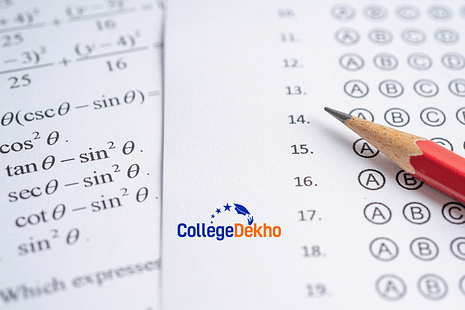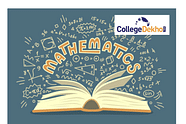- WBJEE vs BITSAT: A Comparative Analysis
- WBJEE vs BITSAT Difficulty Level
- WBJEE vs BITSAT Exam Pattern
- WBJEE vs BITSAT Syllabus
- WBJEE vs BITSAT Sectional Weightage
- Key Differences and Similarities Between WBJEE and BITSAT Exams
- WBJEE vs BITSAT Success Rate and Statistics
- Challenges Faced by Students while Preparing for WBJEE and BITSAT …
- Preparation Tips for WBJEE and BITSAT Exams

Is WBJEE Tougher than BITSAT:
Both WBJEE and BITSAT are quite popular among students for admission to engineering colleges. However, the major difference is that the WBJEE is a state-level exam conducted by the West Bengal Joint Entrance Examination for admissions to colleges across West Bengal, while the BITSAT is a university-level entrance examination conducted by the Birla Institute of Technology and Science for admission to BITS campuses (Goa, Pilani, and Hyderabad). White preparing for the engineering entrance examination, you might often come up with queries, like 'Is WBJEE tougher than BITSAT?' or 'Which is more difficult - WBJEE or BITSAT'. WBJEE vs BITSAT difficulty level can be subjective depending on your preparation level, preparation strategy, and individual strengths and weaknesses in the concerned subject. However, generally, WBJEE is considered relatively easier compared to BITSAT. You should know all the details about the WBJEE vs BITSAT exam pattern, syllabus, and success rate to figure out if WBJEE is tougher than BITSAT examination.
Also Check -
What is the Difference Between WBJEE and JEE Main?
WBJEE vs BITSAT: A Comparative Analysis
WBJEE conducted by the West Bengal Engineering Entrance Examination Board (WBJEEB) is a state-level examination that provides students an opportunity to get admission to the over 100 colleges across West Bengal to pursue B.Tech/ B.Arch/ B.Pharma courses. The
WBJEE 2025 exam
is held for two papers: Paper I - Mathematics and Paper II - Physics and Chemistry. The syllabus of WBJEE comprises topics based on Class 12th syllabus of WBHSCE. Approximately 1.5 lakh students sit for the WBJEE exam every year.
On the other hand, BITSAT is a insititute-level exam conducted by the Birla Institute of Technology and Science (BITS) for admission to engineering, science, and pharmacy programmes at the three main BITS campuses in Pilani, Hyderabad, and Goa. The syllabus of the
BITSAT 2025 exam
is based on the topics covered in 12th standard NCERT syllabus. Nearly 3 lakh students appear for the BITSAT exam each year, which is significantly higher than the number of WBJEE exam takers. Let’s have a detailed look at the WBJEE vs BITSAT difficulty level to determine whether WBJEE is tougher than BITSAT.
WBJEE vs BITSAT Difficulty Level
Students who are appearing for WBJEE and BITSAT exams are always wondering is WBJEE tougher than BITSAT or visa versa. Even though both exams are conducted for admissions to engineering colleges, the difficulty level may differ for both exams. Generally, the BITSAT exam is considered to be more difficult in comparison to WBJEE. Students can understand the difficulty level of both exams with the table below.
Particulars | WBJEE | BITSAT |
|---|---|---|
Level of the Exam | State level | University level |
Number of Questions | 155 | 130 |
Total Marks | 200 | 390 |
Number of Exam Takers | Approximately 1.5 lakhs every year | Approximately 3 lakhs every year |
Courses | B.Tech/ B.Arch/ B.Pharma | BE/ B. Tech |
| Scope of Admission | Admission to 100+ government and private colleges in West Bengal | Admission to 3 BITS campuses (Pilani, Goa and Hyderabad) |
| WBJEE 2025 Eligibility Criteria | WBJEE 2025 Exam Date |
|---|---|
| WBJEE 2025 Registration | WBJEE 2025 Admit Card |
| WBJEE 2025 Exam Centres | - |
WBJEE vs BITSAT Exam Pattern
It is important to have a clear understanding of the WBJEE and BITSAT exam pattern to prepare for the exams. The WBJEE exam is held for a total of 200 marks for three subjects - Physics, Chemistry and Mathematics. A total of 155 questions are asked in the examination. You can find the complete comparison of WBJEE vs BITSAT exam pattern in detail from below.
WBJEE Exam Pattern 2025
The following table includes the complete WBJEE 2025 exam pattern in detail:-
Particulars | Details |
|---|---|
Examination Mode | Offline (OMR) |
Duration of Exam | 4 hours (2 hours for each paper) |
Subjects | Paper 1: Mathematics Paper 2: Chemistry & Physics |
Number of Questions | Physics: 40 Chemistry: 40 Mathematics: 75 |
Types of Questions | Multiple Choice Questions (MCQs) |
Marking Scheme | Category 1: Each correct answer carries 1 mark Category 2: Each correct answer carries 2 marks Category 3: Each correct answer carries 2 marks |
Negative Marking Scheme | Category 1:Deduction of 1/4 marks Category 2: Deduction of 1/2 marks Category 3: No negative marking |
Answer Mode | Four alternatives for each question Only one correct answer is to be selected and circled in the OMR sheet with a black/blue ballpoint pen |
Category-wise Division | Category 1: Mathematics - 50 Questions
Physics and Chemistry - 30 Questions
Mathematics - 15 Questions
Physics and Chemistry - 5 Questions
Mathematics - 10 questions Physics and Chemistry - 5 questions |
WBJEE Total Marks | 200 Marks |
BITSAT Exam Pattern 2025
The following table includes a detailed BITSAT 2025 exam pattern :-Particulars | Details |
|---|---|
Exam Mode | Online (Computer Based Test) |
Number of Sections and Subjects | 3 (Physics, Chemistry, Mathematics/Biology, English, Logical Reasoning) |
Duration of Exam | 3 hours (180 minutes) |
Type of Questions | MCQs |
Marking Scheme | 3 Marks for each correct answer |
Negative Marking Scheme | -1 Mark for each correct answer |
How Many Questions in BITSAT | 130 |
BITSAT Total Marks | 390 marks |
Language of Paper | English |
WBJEE vs BITSAT Syllabus
The syllabus for WBJEE and BITSAT is mostly the same however, the BITSAT syllabus also includes English and Reasoning sections in the exam. In the following table, we have compiled the complete syllabus for the Physics, Chemistry, and Mathematics sections of both exams.
Subject | BITSAT Topics | WBJEE Topics |
|---|---|---|
Physics | Units & Measurement | Physical World, Measurements, Units & dimensions |
Kinematics | Kinematics | |
Newton’s Laws of Motion | Laws of Motion | |
Impulse and Momentum | Gravitation | |
Work and Energy | Friction | |
Rotational Motion | Surface tension | |
Gravitation | Bulk properties of matter | |
Mechanics of Solids and Fluids | Viscosity | |
Oscillations | Kinetic theory of gases | |
Waves | Thermodynamics | |
Heat and Thermodynamics | Current Electricity | |
Electrostatics | Oscillations & Waves | |
Current Electricity | Electrostatics | |
Magnetic Effect of Current | Magnetic effect of current | |
Electromagnetic Induction | Electromagnetic induction & alternating current | |
Optics | Magnetics | |
Modern Physics | Electromagnetic waves | |
Electronic Devices | Nuclear Physics | |
Solid State Electronics | ||
Optics I (Ray optics) | ||
Optics II (Wave Optics) | ||
Chemistry | States of Matter | Atomic Structure |
Atomic Structure | The Periodic Table and Chemical Families | |
Periodicity | Radioactivity and Nuclear Chemistry | |
Thermodynamics | Coordination Compounds | |
Physical and Chemical Equilibria | Chemical Bonding and Molecular Structure | |
Electrochemistry | Solid State | |
Chemical Kinetics | Liquid State | |
Hydrogen and s-block elements | Gaseous State | |
p, d, and f-block elements | Chemical Energetics and Chemical Dynamics | |
Principles of Organic Chemistry and Hydrocarbons | Physical Chemistry of Solutions | |
Stereochemistry | Ionic and Redox Equilibria | |
Organic Compounds with Functional Groups Containing Oxygen and Nitrogen | Hydrogen | |
Biological , Industrial and Environmental chemistry | Chemistry of Non-Metallic Elements and their Compounds | |
Theoretical Principles of Experimental Chemistry | Chemistry of Metals | |
Chemistry in Industry | ||
Polymers | ||
Surface Chemistry | ||
Chemistry of Carbon Compounds | ||
Environmental Chemistry | ||
Compounds | ||
Alcohols | ||
Aromatic Compounds | ||
Application Oriented chemistry | ||
Principles of Qualitative Analysis | ||
Mathematics | Algebra | Algebra |
Trigonometry | Logarithms | |
Two-dimensional Coordinate Geometry | Complex Numbers | |
Three dimensional Coordinate Geometry | Quadratic Equations | |
Differential calculus | Matrices | |
Integral calculus | Permutation and combination | |
Ordinary Differential Equations | Principle of mathematical induction | |
Probability | Binomial theorem | |
Vectors | Sets, Relations, and Mappings | |
Statistics | Statistics and Probability | |
Linear Programming | Trigonometry | |
Mathematical modelling | Two dimensions Coordinate geometry | |
Three dimensions Co-ordinate geometry | ||
Vectors | ||
Differential Equations | ||
Integral calculus | ||
Differential calculus |
Quick Links:
WBJEE vs BITSAT Common Topics
The following are common topics in the WBJEE and BITSAT syllabus:
Subject | Common Topics |
|---|---|
Physics | Physics and Measurement |
Kinematics | |
Laws of Motion | |
Gravitation | |
Thermodynamics | |
Kinetic Theory of Gases | |
Electrostatics | |
Current Electricity | |
Magnetic Effect of Current and Magnetism | |
Electromagnetic Induction and Alternating Current | |
Optics | |
Chemistry | Atomic Structure |
Chemical Bonding and Molecular Structure | |
Coordination Compounds | |
p-block elements | |
d- and f-block elements | |
Equilibrium | |
Mathematics | Complex Numbers and Quadratic Equations |
Algebra | |
Matrices and Determinants | |
Quadratic Equations | |
Sequence and Series | |
Sets, Relations, and Mappings | |
Co-ordinate Geometry | |
Trigonometry | |
Statistics and Probability |
WBJEE vs BITSAT Sectional Weightage
As discussed above, while there are many similarities between the WBJEE and BITSAT exams, there indeed are several fundamental differences between the two as well. In the following tables, we have provided the difference between the sectional weightage of both the WBJEE and BITSAT exams.
WBJEE Sectional Weightage
The WBJEE exam consists of three categories of questions, check the table below to learn the complete WBJEE sectional weightage:
Category | No. of Questions | Total Marks |
|---|---|---|
Category I | Mathematics: 50 Chemistry: 30
Physics: 30
| 110 |
Category II | Mathematics: 15 Chemistry: 5 Physics: 5 Total: 25 | 50 |
Category III | Mathematics: 10 Chemistry: 5 Physics: 5 Total: 20 | 40 |
Total | 155 | 200 |
BITSAT Sectional Weightage
The BITSAT exam consists of five sections, including subjects such as Mathematics, Physics, Chemistry, Logical Reasoning, and English. Check the detailed weightage from the table below:
Section | No. of Questions | Weightage |
|---|---|---|
Mathematics | 40 | 30.77% |
Physics | 30 | 23.08% |
Chemistry | 30 | 23.08% |
Logical Reasoning | 20 | 15.38% |
English | 10 | 7.69% |
Total | 130 | 100% |
Quick Links:
| WBJEE 2025 Exam Preparation Tips | Best Books for WBJEE 2025 Exam Preparation |
|---|---|
| WBJEE Previous Year Question Papers | WBJEE Sample Papers |
| WBJEE 2025 Mock Test | Best WBJEE Coaching Institutes in India 2025 |
Key Differences and Similarities Between WBJEE and BITSAT Exams
Now that we have highlighted the major comparisons between the two entrance examinations, we will have a closer look at the key differences and similarities between the two in the table below:
Particulars | WBJEE | BITSAT |
|---|---|---|
Organizing Body | West Bengal Joint Entrance Examination Board (WBJEEB) | Birla Institute of Technology and Science, Pilani |
Mode of the Examination | Offline (OMR) | Online (Computer-Based Test) |
Duration | 4 hours | 3 hours |
Subjects | Mathematics Physics Chemistry | Mathematics Physics Chemistry Logical Reasoning English |
No. of Questions | 155 | 130 |
Total Marks | 200 | 400 |
Marking Scheme | Category 1: Deduction of 1/4 marks Category 2: Deduction of 1/2 marks Category 3: No. negative marking | +3 marks for correct answers - 1 marks for incorrect answers |
WBJEE vs BITSAT Success Rate and Statistics
The success rate for any entrance exam is determined by the number of students qualifying against the number of students participating in the exam. Understanding the WBJEE and BITSAT success rate comparisons will help students get a better idea of the overall difficulty levels of the exam. Check the table below to get detailed WBJEE vs BITSAT success rates and statistics.
Exam | Success Rate |
|---|---|
BITSAT Exam | 0.65 – 1.5% |
WBJEE Exam | 97-98% |
As per the above table, the BITSAT exam has a significantly low acceptance rate in comparison to the WBJEE exam. The main reason for this is the number of participating colleges in the BITSAT exam. While many government and private colleges participate in the WBJEE exam across West Bengal, the BITSAT exam is only conducted for admission to colleges affiliated with the Birla Institute of Technology and Science, Pilani.
Challenges Faced by Students while Preparing for WBJEE and BITSAT Exams
While preparing for any entrance exams, students may face several challenges. The WBJEE and BITSAT exams have significant differences in their structures. We have listed down some of the challenges that may be faced by students in the points below:
Mode of the exam: The WBJEE exam is conducted offline in OMR mode, therefore, students have to manually fill in the details and answers in an OMR sheet. On the other hand, the BITSAT exam is conducted online in CBT mode, requiring students to have computer proficiency.
The exam pattern: The WBJEE exam pattern provides for three categories of questions in the exam paper. The BITSAT exam has 5 sections. This requires students to adopt different exam preparation strategies.
The difficulty level of exams: The BITSAT is generally considered to be more difficult to crack thanks to its low accepting rates. Therefore, students should manage exam preparations effectively for both exams.
Subjects and number of questions: Both the WBJEE and BITSAT exams put more emphasis on Mathematics, however, the WBJEE exam has more number of Mathematics questions. This requires students to focus more on Math while also preparing for other sections.
Preparation Tips for WBJEE and BITSAT Exams
Students preparing for engineering entrance examinations such as BITSAT and WBJEE can leverage useful tips and plan their preparations accordingly. In the following points, we have come up with some of the most useful preparation tips for WBJEE and BITSAT aspirants:
1. Know the syllabus: Students should know the complete syllabus of their respective exams. If you are preparing for both exams, focus on the common topics.
2. Understand the exam pattern: Students should have a complete understanding of the WBJEE and BITSAT exam patterns to know what to expect in the question paper.
3. Study from the previous years’ question papers: Students should prepare from the previous question papers of the respective exams to have a better understanding of the upcoming exam and marking scheme.
4. Prepare from the best resources: It is best to study from the best resources and books to have a focused study plan and preparation strategy.
5. Participate in mock tests: Students should participate in the mock test series for respective exams to assess their preparedness.Related Articles
Are you feeling lost and unsure about what career path to take after completing 12th standard?
Say goodbye to confusion and hello to a bright future!

Was this article helpful?


















Similar Articles
BITSAT Slot Booking 2025 (Phase 1 May 13) - Dates, Process, How to Book Slot
Polytechnic Courses 2025: Details, Fees, Eligibility, Admission Criteria
JEE Advanced 2025 Exam Day Instructions - Documents to Carry, Guidelines
How to Score 200+ Marks in JEE Advanced?
JEE Advanced 2025 - Top 5 Preparation Tips and Tricks
Most repeated questions for JEE Advanced 2025